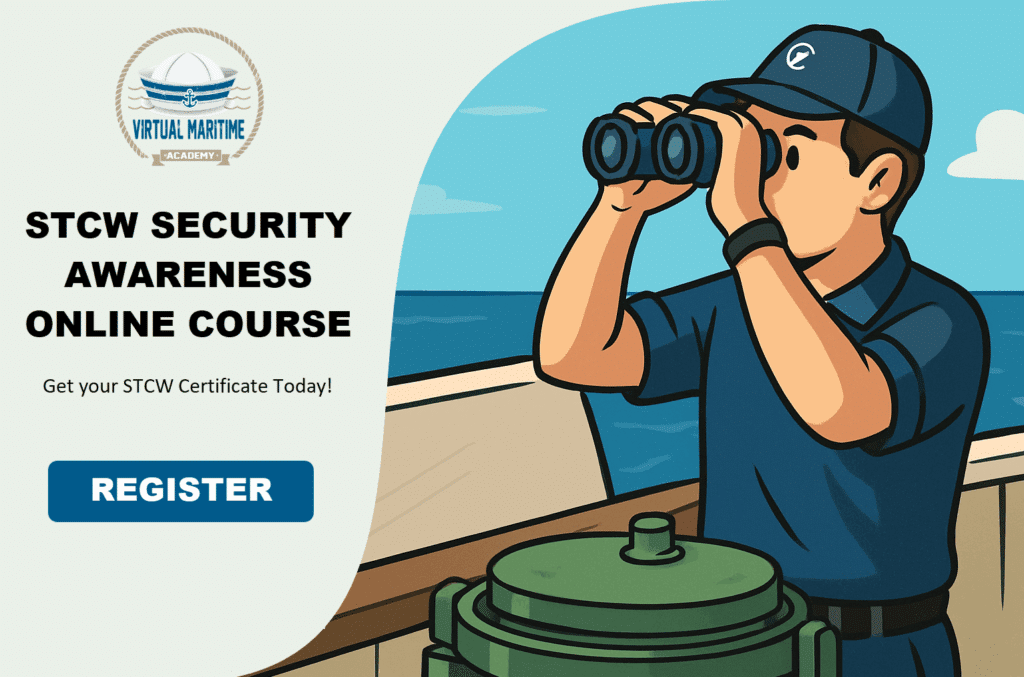Navigating the turbulent waters of marine facility security necessitates a robust and comprehensive approach to risk assessment. As the complex interplay of assets, threats, and vulnerabilities unfolds, a meticulous security risk assessment becomes paramount. At its core, this process involves identifying potential risks, evaluating their potential impacts, and developing strategies to mitigate those risks effectively. By employing this structured approach, marine facilities can safeguard their operations, protect their valuable assets, and ensure compliance with stringent regulatory standards.
Security risk assessment in marine facilities isn’t just about checking off boxes; it’s about understanding the unique challenges posed by the marine environment. Unlike terrestrial facilities, marine infrastructures face threats such as piracy, smuggling, and environmental hazards that require specialized attention. Moreover, the regulatory landscape for marine security is intricate, with standards set by international bodies like the International Maritime Organization (IMO) and domestic regulations that must be rigorously adhered to.
To conduct a thorough security risk assessment, preparation and data collection are the starting points. This involves identifying critical assets and vulnerable points within the facility, as well as gathering historical data on past incidents and potential threats. This foundational phase sets the stage for a detailed risk analysis and evaluation, where methodologies such as qualitative and quantitative assessments help to measure the likelihood and impact of various risks. This step is crucial in prioritizing which risks require the most urgent attention.
With risks identified and evaluated, the focus shifts to developing and implementing robust mitigation strategies. Tailoring response plans and security measures to the specific needs and risks of the facility ensures that threats are not just acknowledged but proactively managed. Continuous monitoring and reassessment are vital, ensuring that the security measures remain effective and adaptive to evolving threats. This ongoing vigilance guarantees that marine facilities can operate securely and efficiently, amidst the dynamic and often unpredictable marine environment.
Understanding Security Risk Assessment in Marine Facilities
What is Security Risk Assessment?
Security risk assessment is a systematic approach to identifying, evaluating, and mitigating potential threats to a facility or operation. Within marine facilities, this process becomes critical, given the complex environment and the high stakes involved. The primary objective is to ensure the safety of assets, personnel, and operations while complying with regulatory standards.
The importance of security risk assessment lies in its ability to preclude incidents that could result in substantial financial loss, environmental damage, or even loss of life. For marine facilities, where the intersection of human activity and vast open waters presents unique hazards, a thorough security risk assessment can be a lifesaver.
Key Components and Objectives
A comprehensive security risk assessment in a marine setting encompasses several crucial components:
- Risk Identification: This involves recognizing potential threats, vulnerabilities, and scenarios that could pose risks. Examples include unauthorized access, terrorism, theft, or natural disasters.
- Risk Evaluation: Evaluating the identified risks in terms of their likelihood and impact. This step aids in prioritizing resources to address the most critical threats.
- Mitigation Strategies: Developing and implementing measures to mitigate identified risks. This could involve physical barriers, surveillance systems, cybersecurity measures, and more.
- Regulatory Compliance: Ensuring that the facility adheres to local, national, and international regulations and standards. Compliance not only mitigates risks but also avoids legal repercussions.
The objectives of security risk assessment are multifaceted. Beyond identifying and mitigating risks, it aims to enhance overall security posture, improve emergency response capabilities, and foster a culture of continuous improvement.
Unique Challenges in Marine Facility Security
Threats Specific to Marine Environments
Marine facilities face a plethora of unique threats not commonly encountered in other sectors. The vast, open nature of marine environments makes them susceptible to acts of piracy, smuggling, and unauthorized boarding. Furthermore, the maritime sector’s global nature exposes it to international terrorism and geopolitical tensions.
The susceptibility to weather-related incidents cannot be overstated. Hurricanes, tsunamis, and other natural disasters pose significant risks to marine operations. A robust risk assessment must account for these environmental variables and their potential to disrupt operations.
Regulatory Compliance and Standards
Marine facilities must navigate a complex web of regulatory requirements and industry standards. From the International Ship and Port Facility Security (ISPS) Code to Homeland Security directives, compliance is non-negotiable. The ISPS Code, for instance, mandates specific security protocols for safeguarding maritime operations, requiring regular risk assessments and security drills.
Regulatory compliance extends beyond security. Environmental regulations, such as those imposed by the International Maritime Organization (IMO), necessitate rigorous assessments to prevent accidental discharges and contamination. A comprehensive security risk assessment ensures that marine facilities not only protect their assets but also conform to all pertinent regulations.
Navigating Technological Advancements
As maritime operations become increasingly reliant on technology, cyber threats have emerged as a prominent concern. The interconnectedness of modern marine facilities means that a cyberattack could cripple crucial systems, disrupting operations and endangering personnel.
Incorporating cybersecurity into the risk assessment process is essential. This entails evaluating the vulnerabilities within IT and operational technology (OT) systems and implementing robust cybersecurity measures. Regular penetration testing and network monitoring become integral components of a holistic security strategy.
Moreover, advancements in surveillance technology, such as drone monitoring and remote sensing, provide marine facilities with innovative tools for enhancing security. Integrating these technologies into the risk assessment process can offer real-time insights and early warnings of potential threats.
Maintaining Operational Continuity
Unlike other sectors, marine facilities often operate on a 24/7 basis, with little room for downtime. This continuity is vital for meeting supply chain demands and ensuring the smooth flow of maritime traffic. A security incident that halts operations can have far-reaching consequences.
An effective security risk assessment should focus on ensuring operational continuity. This includes developing contingency plans, backup systems, and redundant communication channels. Regular drills and simulations prepare staff to handle emergencies without disrupting essential functions.
Furthermore, collaboration with stakeholders—such as port authorities, shipping companies, and law enforcement—magnifies the effectiveness of security measures. Information sharing and joint exercises bolster collective security and enhance response capabilities.
Future-Proofing Marine Security
The dynamic nature of marine operations necessitates a forward-looking approach to security risk assessment. This means anticipating emerging threats and continuously updating security protocols. Factors such as climate change, evolving geopolitical dynamics, and technological advancements must be considered.
Investing in research and development to stay ahead of potential threats is prudent. Engaging with industry experts, participating in security forums, and closely monitoring global trends enable marine facilities to adapt proactively.
In conclusion, a comprehensive security risk assessment in marine facilities is indispensable for safeguarding assets, personnel, and operations. By understanding the nuances of marine environments, adhering to regulatory standards, and embracing technological advancements, marine facilities can mitigate risks and ensure operational continuity.
Discover More About Our Courses Here!
Steps to Conduct a Thorough Security Risk Assessment in Marine Facilities
Preparation and Data Collection
Comprehensive preparation is the cornerstone of a thorough security risk assessment for marine facilities. Start by identifying assets and vulnerabilities within your facility. This involves cataloging all physical, digital, and human assets within the facility and pinpointing potential weak points that could be exploited. Consider everything from dock equipment and cargo to access control systems and staff credentials.
Next, embark on gathering historical data and potential threats. Analyze past incidents, both within your facility and similar ones. Scrutinize local, national, and international security threat reports to understand evolving risks. This data is crucial; it builds a solid foundation for your risk analysis and helps in crafting effective mitigation strategies.
Risk Analysis and Evaluation
Once your data is in hand, it’s time for a meticulous risk analysis and evaluation. Deploy tried-and-true methodologies for assessing risks, such as SWOT (Strengths, Weaknesses, Opportunities, and Threats) analysis or the Hazard Vulnerability Analysis (HVA). Regardless of the chosen method, the goal remains to systematically identify and rank potential threats based on their severity and likelihood.
In parallel, employ techniques for evaluating impact and likelihood. Utilize quantitative tools like risk matrices to categorize threats as high, medium, or low. Evaluate both the potential impact on operational continuity and the financial implications. Remember, a threat that seems minor might have a cascading effect, leading to severe disruptions.
Mitigation Strategies and Implementation
With a clear understanding of the risks, shift focus to devising robust mitigation strategies and implementation. Start by developing response plans and security measures. Each identified risk should have a corresponding response strategy, be it physical barriers, cybersecurity protocols, or enhanced personnel training programs. Integrate redundancy into critical systems to ensure operational resilience.
Finally, establish a protocol for continuous monitoring and reassessment. The maritime security landscape is ever-evolving, making periodic assessments vital. Regular audits and real-time monitoring systems can help catch emerging threats early, allowing for prompt action. Utilize advanced monitoring technologies like CCTV surveillance with AI analytics and regularly update your response plans based on the latest threat intelligence.
After a meticulous examination, it becomes evident that a robust security risk assessment is indispensable for marine facilities. The intricate nature of marine environments, with threats ranging from piracy to environmental hazards, makes the task uniquely challenging. A methodical approach encompassing preparation, data collection, rigorous risk analysis, and comprehensive evaluation forms the backbone of an effective assessment.
Emphasizing the collection of detailed historical data and identifying latent vulnerabilities sets the stage for identifying potential threats. Utilizing advanced methodologies for risk assessment ensures a nuanced understanding of both the probability and impact of various security threats. Implementing tailored mitigation strategies, coupled with diligent response plans, fortifies the facility against potential risks. Continuous monitoring and reassessment ensure that security measures evolve in tandem with emerging threats and compliance with stringent regulatory standards is maintained.











